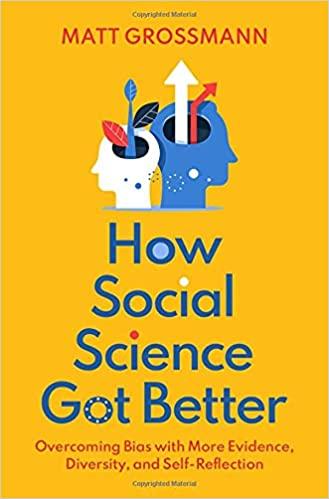https://ebookmass.com/product/introduction-to-researchmethods-and-data-analysis-in-psychology-darren-langdridge/
Instant digital products (PDF, ePub, MOBI) ready for you
Download now and discover formats that fit your needs...
Introduction to Research Methods in Psychology, 4th ed 4th Edition Dennis Howitt
https://ebookmass.com/product/introduction-to-research-methods-inpsychology-4th-ed-4th-edition-dennis-howitt/
ebookmass.com
An Introduction to Statistical Methods and Data Analysis 7th Edition, (Ebook PDF)
https://ebookmass.com/product/an-introduction-to-statistical-methodsand-data-analysis-7th-edition-ebook-pdf/
ebookmass.com
Introduction to Forensic Psychology: Research and Application (NULL)
https://ebookmass.com/product/introduction-to-forensic-psychologyresearch-and-application-null/
ebookmass.com
Engineering Vibration 4th Edition, (Ebook PDF)
https://ebookmass.com/product/engineering-vibration-4th-edition-ebookpdf/
ebookmass.com
Business ethics Ninth Edition William H. Shaw
https://ebookmass.com/product/business-ethics-ninth-edition-william-hshaw/
ebookmass.com
How Social Science Got Better 1st Edition Matt Grossmann
https://ebookmass.com/product/how-social-science-got-better-1stedition-matt-grossmann/
ebookmass.com
Red Tide at Heron Bay Gerri Hill
https://ebookmass.com/product/red-tide-at-heron-bay-gerri-hill/
ebookmass.com
Standalone Photovoltaic (PV) Systems for Disaster Relief and Remote Areas 1st Edition Salahuddin Qazi
https://ebookmass.com/product/standalone-photovoltaic-pv-systems-fordisaster-relief-and-remote-areas-1st-edition-salahuddin-qazi/
ebookmass.com
Tsushima: Great Battles Series Rotem Kowner
https://ebookmass.com/product/tsushima-great-battles-series-rotemkowner/
ebookmass.com
Introduction to Research Methods and Data Analysis in Psychology
Third Edition
DarrEn LangDriDgE
garETh haggEr-Johnson
Pearson Education Limited
Edinburgh Gate
Harlow CM20 2JE
United Kingdom
Tel: +44 (0)1279 623623
Web: www.pearson.com/uk
First published 2004 (print)
Second edition published 2009 (print)
Third edition published 2013 (print and electronic)
© Pearson Education Limited 2004, 2009 (print)
© Pearson Education Limited 2013 (print and electronic)
The rights of Darren Langdridge and Gareth Hagger-Johnson to be identified as author of this work has been asserted by them in accordance with the Copyright, Designs and Patents Act 1988.
The print publication is protected by copyright. Prior to any prohibited reproduction, storage in a retrieval system, distribution or transmission in any form or by any means, electronic, mechanical, recording or otherwise, permission should be obtained from the publisher or, where applicable, a licence permitting restricted copying in the United Kingdom should be obtained from the Copyright Licensing Agency Ltd, Saffron House, 6–10 Kirby Street, London EC1N 8TS.
The ePublication is protected by copyright and must not be copied, reproduced, transferred, distributed, leased, licensed or publicly performed or used in any way except as specifically permitted in writing by the publishers, as allowed under the terms and conditions under which it was purchased, or as strictly permitted by applicable copyright law. Any unauthorised distribution or use of this text may be a direct infringement of the author’s and the publishers’ rights and those responsible may be liable in law accordingly.
All trademarks used herein are the property of their respective owners. The use of any trademark in this text does not vest in the author or publisher any trademark ownership rights in such trademarks, nor does the use of such trademarks imply any affiliation with or endorsement of this book by such owners.
The screenshots in this book are reprinted by permission of Microsoft Corporation.
Pearson Education is not responsible for the content of third-party internet sites.
ISBN: 978-0-273-75687-3 (print) 978-0-273-75688-0 (PDF) 978-0-273-78685-6 (eText)
British Library Cataloguing-in-Publication Data
A catalogue record for the print edition is available from the British Library
Library of Congress Cataloging-in-Publication Data
A catalog record for the print edition is available from the Library of Congress
10 9 8 7 6 5 4 3 2 1 16 15 14 13 12
Cover image © Getty Images
Print edition typeset in 9.5 pt ITC Stone Serif Std by 32
Print edition printed and bound in Malaysia
NOTE THAT ANY PAGE CROSS REFERENCES REFER TO THE PRINT EDITION
Dedication
This book is dedicated to the memory of my grandparents, Sheila and Albert Preece, whose love and support will never be forgotten.
− D. L.
This book is dedicated to Richard Street.
− G. H.-J.
This page intentionally left blank
analysing qualitative data
4.7
9.6
9.7
26.7
26.8
Companion Website
For open-access student resources specifically written to complement this textbook and support your learning, please visit www.pearsoned.co.uk/langdridge
Lecturer Resources
For password-protected online resources tailored to support the use of this textbook in teaching, please visit www.pearsoned.co.uk/langdridge
1.1
List of figures
6.1
6.2
6.3
6.4
8.1
16.6
17.12
17.14 A boxplot produced in R
17.15 A graphical representation of a Tukey post-hoc test
17.16 A line graph and bar graph of the same data, shown together
17.17 Example of the wide format data
17.18 Example of the long format data
25.1 The model of preparation (adapted from Mayring, 2001) 522
25.2 The model of generalisation (adapted from Mayring, 2001) 523
25.3 The model of profoundisation (adapted from Mayring, 2001) 524
25.4 The model of triangulation (adapted from Mayring, 2001) 525
25.5 A framework for thinking about models of triangulation (Kelle, 2001) 527
25.6 Q-grid for 49 Q statements, showing layout and numerical values assigned to each position 532
25.7 Flash Q: the initial sort 535
25.8 Flash Q: moving the cards into a forced normal distribution 536
Guided tour
Starting out in
Each chapter begins with an Introduction that sets up the topic and outlines what will be covered. ■
M01_LANG6873_03_SE_C01.indd
INTRODUCTION
M01_LANG6873_03_SE_C01.indd 5
Study
Operationalising variables 41
we say that we are operationalising variables. Try to define some of your own variables and see how you get on – it is not as easy as it seems (Box 2.1).
Box 2.1 Activity box Operationalising variables
■ Try to write your own definitions of the following constructs: 1 Self-esteem 2 Anxiety 3 Love
■ How did you find it? The last one, in particular, is not easy. Now try to think through how you could measure these constructs. What variables do you need to explicitly define and how would you measure them? ■ Yes, that was even harder. We guarantee that by the end of this book, if you stick with it, you will be considerably better at being able to define and measure constructs.
We all have common-sense understandings of self-esteem, anxiety and love, so there must be some mutual understanding of these constructs. What we need to do in psychology is draw out these common understandings (and also quite possibly elements that are not commonly understood) and make them explicit so that we can measure them. So, how would we measure self-esteem? Well, there are a number of standardised tests (such as the Rosenberg Self-Esteem Inventory) for self-esteem that are in widespread use in psychological research. The most commonly used version of the Rosenberg Self-Esteem Inventory consists of ten statements (including statements such as ‘I like myself’). Responses to these statements are measured using a four-point scale (a Likert scale), recording how much you agree or disagree with the statement (1 = I disagree very much, 2 = I disagree, 3 = I agree and 4 = I agree very much). This test is considered to be a valid and reliable measure of self-esteem (these concepts are discussed in detail in the next chapter) and has been tested on a wide variety of populations. It is these qualities that enable us to state that the test has been standardised. Tests of these kinds are available to measure many psychological constructs and are widely used in psychological research (and clinical settings). However, sometimes we have to create our own scales (see Chapter 5), and we do this by defining our variables and operationalising their measurement. The important point, however, is that we need to be clear, unambiguous and explicit about what it is we are measuring.
M02_LANG6873_03_SE_C02.indd
Activity boxes suggest quick things you can do to apply a concept yourself. They also include hints and tips on how this learning can be taken further.
Command boxes provide detailed step-by-step instructions on carrying out statistical analysis using the latest version of SPSS. They are linked to SPSS files available on the website.
424 Chapter 19 / Transcribing, coding and organising textual data 19.2 Systems of transcription
There is no universal system for transcription. The simple approach detailed above is adequate for much qualitative research but not all. Those approaches to research that focus on language and language use, such as discourse analysis, some forms of narrative analysis and conversation analysis (which is mentioned in Chapter 22), require a much more detailed level of transcription. But there are many different approaches to the analysis of language, and different approaches tend to use different systems of transcription. Even within the same approach there are disagreements over which system of transcription to use. What do we mean by ‘system’? Well, when we said the approach detailed above was simple, that was not an understatement. While a verbatim record that focuses on the content of what was said may be adequate for a phenomenological analysis or grounded theory, it is most certainly not adequate for discourse or conversation analysis. This is because it does not record the conversation in sufficient detail. The important thing to remember is that spoken language not only involves verbal information but also the prosodic (phonological elements of spoken language such as intonation and stress), the paralinguistic (non-phonemic aspects of language, such as whether a word was said in a joking manner or seriously) and the extralinguistic (non-linguistic elements of speaking, such as gestures).
The very fine level of analysis in which a discourse or conversation analyst engages includes analysis of all these aspects of language, for they believe (and argue very strongly) that this information is necessary for understanding what is meant in an utterance (O’Connell & Kowal, 1995). This means that we need to include more information than simply verbal information in a transcript if we wish to conduct a linguistic analysis of this kind. Therefore we need a comprehensive system to record and code all this extra information into a written form. No system is perfect, however, and there are therefore arguments over which system is best and/or most appropriate for a particular form of analysis. One of the most widely used
Information boxes offer tips and examples to help you plan research, avoid common mistakes and carry out a successful research project.
Statistics boxes demonstrate how to do common statistical calculations by hand.
The data file being used here is called RMB_IND_ANOVA.SAV and is available from the book website. Fig. 13.1 shows how
scholastic
for
and
(age 16) at school. The first condition (scored 1) involved no active intervention and is therefore considered the control group. Educational intervention A (scored 2) was a career guidance intervention where pupils were counselled about future careers. Educational intervention B (scored 3) was a motivational intervention where pupils were given motivational seminars to encourage achievement.
■ The dependent variable is performance on the end of year scholastic aptitude test (‘test’).
■ There are two factors that can be investigated: Factor 1 is the educational intervention (‘condition’), which has three conditions (Control (1), A (2) or B (3)); Factor 2 is sex of pupil (‘sex’), which has two conditions (1 or 2, where 1 female pupils and 2 male pupils). Figure 13.1 Data used for independent ANOVA
Each chapter ends with further reading suggestions – helpful books and websites that will give you a deeper understanding of what you’ve learnt. Further reading 465 psychologists would argue that grounded theorists end up inappropriately moving from a human science with the principal aim being to describe the richness of our lived experiences, to a natural science, with the principal aim being prediction and control. For, while the aims and methods of the natural sciences have undoubtedly been useful in biology, physics and chemistry, they have not and cannot produce the same dividends when investigating human nature. For more on the distinction between natural and human sciences see Giorgi (1985b).
Further reading Bryant, A. & Charmaz, K. (eds.) (2010). The Sage Handbook of Grounded Theory. London: Sage. A very comprehensive overview of the method with contributions from many of the leading figures in the field. The book covers everything from the origins and history to debates and the practicalities of carrying out research. Charmaz, K. (1995). Grounded theory. In J. A. Smith, R. Harré
Theory: A Practical Guide Through Qualitative Analysis. London: Sage. A very clear and practical book on the constructionist approach to grounded theory of Kathy Charmaz. Corbin, J. & Strauss, A. (2008). Basics of Qualitative Research 3rd edn. London: Sage.
Preface
This book aims to present a comprehensive introduction to research methods and data analysis for undergraduate students in psychology. It should provide students with a single textbook to cover the majority of topics they will typically encounter in an undergraduate course in psychology.
This book is unusual because of the coverage of quantitative and qualitative methodologies. While there are many books that aim to introduce either quantitative or qualitative methods, there are very few books that address both. It is also worth noting that those books that do claim to cover both quantitative and qualitative approaches invariably fail to provide sufficient depth on one or the other for most undergraduate courses in psychology.
In addition, this book introduces students to the range of research methods used in psychology using topical real-life examples wherever possible. Considerable coverage is given on the analysis of data from both quantitative (by hand and using IBM® SPSS® Statistics version 19.0*) (‘SPSS’) and qualitative perspectives. The material on the analysis of data is predominantly non-mathematical with formulae kept to a minimum. Increasing numbers of students in psychology lack any formal mathematical training and often find the mathematical presentation of data analysis highly alienating. While it is recognised that some key concepts require the use of basic mathematics, the widespread use of computer packages for the analysis of data means that students can learn statistics ‘by doing’, not simply by following mathematical formulae.
The book also includes activity boxes (which can be used by lecturers or tutors for class/laboratory activities), study boxes (detailing published research) and information boxes. It is thought that this organisational structure should best facilitate student learning, and the use of the book in classroom and laboratory activities by university lecturers. The accompanying website (see below) provides easy access to these sources.
The principal readers will be first, second and possibly third year undergraduates on psychology degrees. Students on courses in sociology, health sciences, applied and generic social sciences, cultural studies, business studies and the humanities may also find this book of value. Professionals from a variety of other disciplines wanting a simple yet comprehensive guide to psychological research methods and data analysis may also find this text of use.
Structure of the book
The book consists of four parts:
*SPSS was acquired by IBM in October 2009
■ Part 1 provides information on research methods. This includes details of the philosophy underpinning the discipline and the distinction between quantitative and qualitative methods. There is detailed advice on searching and reviewing the literature along with information on a number of key issues including the need for accuracy in measuring variables, reliability, validity, sampling and much more. This section also provides coverage on the range of methods used by psychologists to collect data with guidance on interviews, observation, experiments, questionnaires and psychometric tests. There is also a chapter providing advice on conducting ‘e-research’.
■ Part 2 provides coverage of the quantitative analysis of data and introduces the reader to the use of IBM SPSS Statistics (version 19.0) (‘SPSS’). This section begins with coverage of the fundamentals of statistics and then moves progressively through the most commonly used statistical tests in psychological research today. Information is provided on the calculation of these statistics by hand (where useful) and by using SPSS. A new chapter on factor analysis is included in this edition. For the really keen, there is an introduction to the open access statistics software called ‘R’. At the end of Chapter 15 there is a statistical flowchart designed to guide the reader through the selection of appropriate statistical tests.
■ Part 3 covers qualitative methods of analysis and introduces the reader to phenomenological approaches, grounded theory, discourse analysis and life story/ narrative research. The section begins by providing further discussion of the philosophical issues underpinning qualitative and quantitative research. Information is provided on transcription and coding before moving on to cover each of the major approaches to qualitative research in use today. There is also coverage of the use of computers in qualitative analysis and also a chapter on mixed methods.
■ Part 4 covers the important issues of ethics and politics along with information and guidance on reporting and presenting your findings. This edition now includes an annotated example of a report write-up to provide further guidance on the presentation of reports in psychology.
Although the book is designed to be read from Chapter 1 through to Chapter 27, the interested reader should be able to dip into any of the chapters without too much difficulty. Most chapters do not rely on others for understanding, but readers new to research methods are advised to progress through the book from Chapter 1 to Chapter 27 to maximise their understanding.
Supplementary material
Additional student and lecturer material for this book is provided on an accompanying website (www.pearsoned.co.uk/langdridge). The following student/ lecturer items are available:
■ multiple choice questions to test your knowledge;
■ weblinks to useful sites to help you explore relevant topics in greater depth;
■ downloadable datasets and text files to accompany exercises and examples from Parts 2 and 3 in the book;
■ a guide with useful tips and common traps.


















